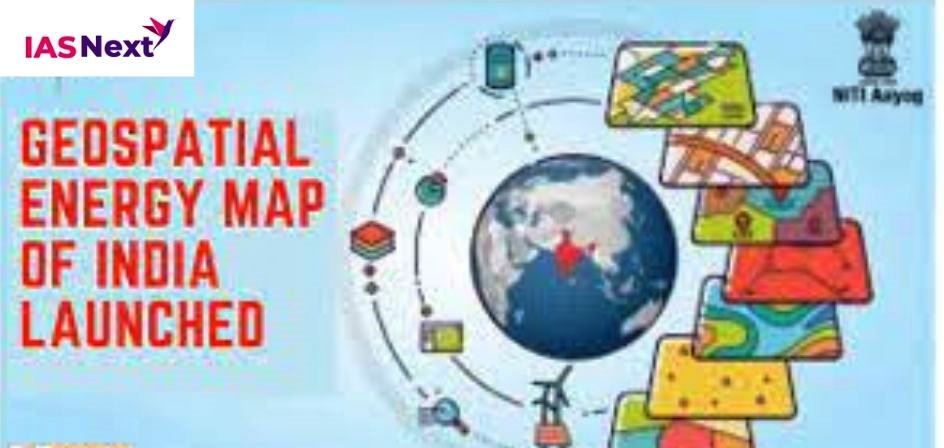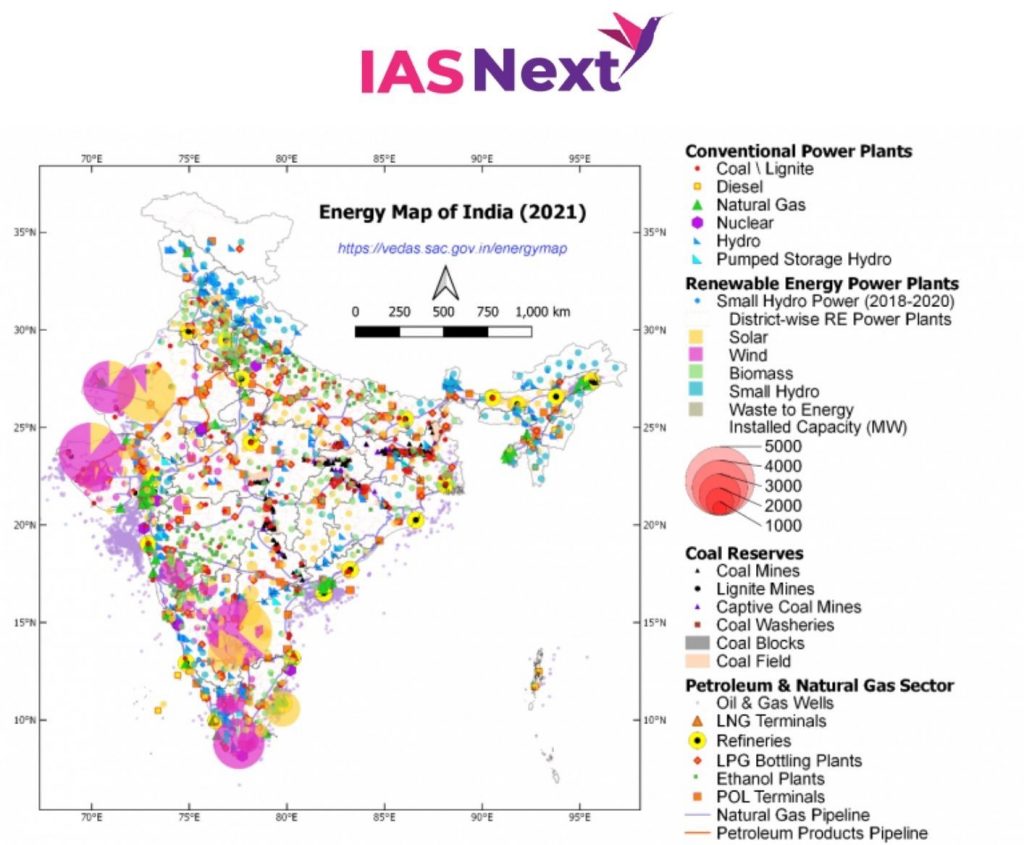CURRENT AFFAIRS
Get the most updated and recent current affair content on Padhaikaro.com
Geospatial Energy Map of India launched by NITI Aayog
- IAS NEXT, Lucknow
- 21, Oct 2021

What is it?
Geospatial Energy Map, enables visualisation of energy installations such as conventional power plants, oil and gas wells, petroleum refineries, coal fields and coal blocks, district-wise data on renewable energy power plants and renewable energy resource potential, etc through 27 thematic layers.
- This comprehensive Geographic Information System (GIS) Energy Map of India has been developed by NITI Aayog in collaboration with Indian Space Research Organisation (ISRO).
- The GIS map provides a holistic picture of all energy resources of the country.

What will it do?
The map attempts to identify and locate all primary and secondary sources of energy and their transportation/transmission networks to provide a comprehensive view of energy production and distribution in a country.
Key features:
- It is a unique effort aimed at integrating energy data scattered across multiple organizations and to present it in a consolidated, visually appealing graphical manner.
- It leverages latest advancements in web-GIS technology and open-source software to make it interactive and user friendly.
- The Geospatial Energy Map of India will be useful in planning and making investment decisions.
- It will also aid in disaster management using available energy assets.
Significance of GIS-mapping:
GIS-mapping of energy assets will be useful for ensuring real-time and integrated planning of energy sector of India, given its large geographical distribution and interdependence. It will be advantageous to all concerned stakeholders and will help in accelerating the policy-making process.